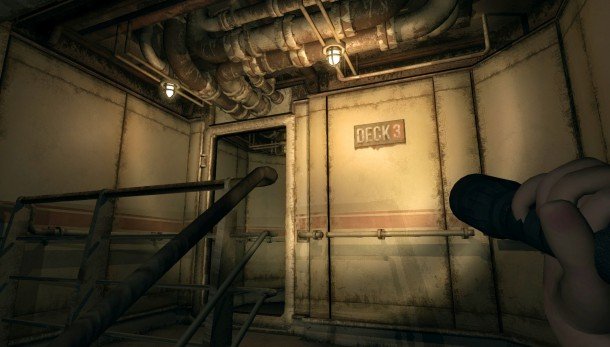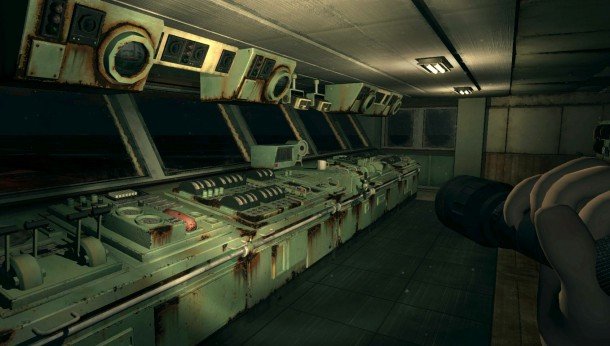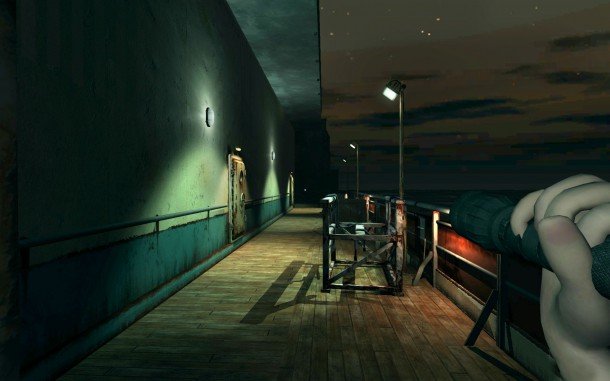Monstrum hands-on: procedurally generated horror on a claustrophobic cargo ship

The new wave of horror games are an opportunity to be the most boring protagonist ever written: to ignore the unspoken rules about walking backwards into dark rooms and spend all your time standing in well-lit areas refusing to move. That's what they are for me, anyway. A gloomy stage on which to demonstrate my pragmatism and cowardice. A way to declare to the world: “no, I do not want to collect several notes. I am going to stay in this locker, thank you.”
I'm in a locker on the upper decks when I hear footsteps—a thump, thump, thump off in the distance that could be nothing, but probably isn't. Monstrum is happy to torment you with mysterious noises—even the doors sound terrifying—but this is the first thing I've heard that suggests that I'm not alone.
I nip out of my locker and switch the lights off, then crouch and peek into the corridor with my torch. I catch a glimpse of orange light followed by the silhouette of something that isn't human. I hear it roar and that's enough to get me back into my locker. It charges into the room after me, scattering furniture, but it seems that switching the light off was enough to secure my hiding place. I wait, and the monster leaves. Tentatively, I hit the key to open the locker door.

It's stuck. The monster knocked a chair into the path of the door on its way in, and for a moment I fear that I'm trapped. I apply a little more pressure and it gives—clattering noisily across the floor, drawing that thing back to my location. It doesn't take long after that. A few seconds later, I'm back at the main menu.
Monstrum is a procedurally-generated first-person horror game set on an adrift cargo ship. Death matters: get caught by the monster or lose your footing and your attempt to escape is over. Next time you start, the layout of the ship will be different, the locations of key items will have changed. It's this that gives the game an edge over what its most obvious peers—the Amnesia series, Slender—have already achieved. Here there's no memorising patterns or plotting tension-free speedruns: a single accident can spell disaster, and that creates genuine tension.
Some rough edges will need to be addressed for the final game. Look down and you'll see that your own body is stiffly animated, which is particularly noticeable if you fall off something. Get caught by the monster and you're abruptly booted to the loading screen: the game makes its point well enough, but a little more spectacle in the event of your grim demise would go a long way. Those are details, though, and there's time to resolve them. This is a promising horror adventure with a great high concept, and it deserves your attention in the last six months before release.

The biggest gaming news, reviews and hardware deals
Keep up to date with the most important stories and the best deals, as picked by the PC Gamer team.
Joining in 2011, Chris made his start with PC Gamer turning beautiful trees into magazines, first as a writer and later as deputy editor. Once PCG's reluctant MMO champion , his discovery of Dota 2 in 2012 led him to much darker, stranger places. In 2015, Chris became the editor of PC Gamer Pro, overseeing our online coverage of competitive gaming and esports. He left in 2017, and can be now found making games and recording the Crate & Crowbar podcast.


